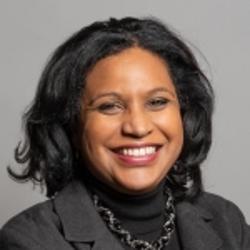Disabled Students' Allowances
(asked on 5th February 2025) - View SourceQuestion to the Department for Education:
To ask the Secretary of State for Education, how many assistive technology products funded via the Disabled Students Allowance for spelling and grammar support require a needs assessment before being approved.
The average waiting time for a needs assessment from the date of application to the date of the assessment being carried out comprises the time taken by the Student Loans Company (SLC) to process an application and then the time taken by the contracted suppliers Capita and Study Tech to process the needs assessment.
The time taken by SLC to process an application is published online at GOV.UK here: https://www.gov.uk/guidance/sfe-current-application-timescales. The latest weekly update, for February, shows that the average time taken for SLC to process an application, shown under the heading “a DSA application”, is currently 7 working days. The average time taken for the contracted suppliers to offer and complete the needs assessment is currently 28 days. Each supplier has been set two individual KPIs to cover the offer and completion of the needs assessment. These are KPI 1, “Booking of a Needs Assessment Appointment (Minimum of 95% of offer of needs assessment appointment made within 2 working days of referral of customer by SLC)” and KPI 2, “Completion of a Needs Assessment (Minimum of 95% of needs assessment interviews should be offered and completed within 7 working days of successful contact (excluding those where the customer has requested an alternative date))”.
Following completion of the needs assessment, both suppliers are required to return the needs assessment report to SLC for review within 5 workings days, as stipulated by KPI 3, “Minimum of 95% of NARs made available to SLC within 5 working days of when needs assessments undertaken (excluding those where the customer has requested to review the needs assessment report)”. It is currently taking suppliers on average 14 days to return the needs assessment report to SLC. The needs assessment is then reviewed by SLC, following which confirmation of entitlement is communicated to the customer on the DSA2 letter. It is currently taking SLC 10 working days to complete this stage of the journey, as noted on the GOV.UK page under the heading “a Needs Assessment report”.
Information on the suppliers’ performance against their KPIs is published online on a quarterly basis here: https://www.gov.uk/government/groups/ds. The next update will be published at the end of February.
All students applying for Disabled Students’ Allowance (DSA) are required to have a needs assessment. This means that assistive software for spelling and grammar support has only been awarded when recommended in a needs assessment and agreed by SLC.
Data on the number of students awarded specific assistive software for spelling and grammar support through DSA for the time periods specified in the question is not immediately available, but in the 2023 calendar year this was around 36,000.
A list of the assistive software products for spelling and grammar support that have previously been awarded through DSA is published online here: https://www.practitioners.slc.co.uk/exchange-blog/2017/april/dsa-product-review-process/. This list is for administrative purposes only. Products that are not on the list can also be funded through DSA if they are recommended by a needs assessor and agreed by SLC. Overall, agreed spend on spelling and grammar software through DSA is in the region of £4.5 million to £5 million annually. The total spend on each software product within that varies, as it depends on which products are recommended by needs assessors as being most suitable for students’ needs. As an illustration, in the 2023 calendar year, around 80% of total spend was on non-specialist grammar and spelling products, with Grammarly Premium making up 53% of total spend and Global Autocorrect 24% of total spend. Around 20% of total spend was on specialist grammar and spelling products for specific subject areas such as medicine and law, with Medincle products making up 16% of total spend.

